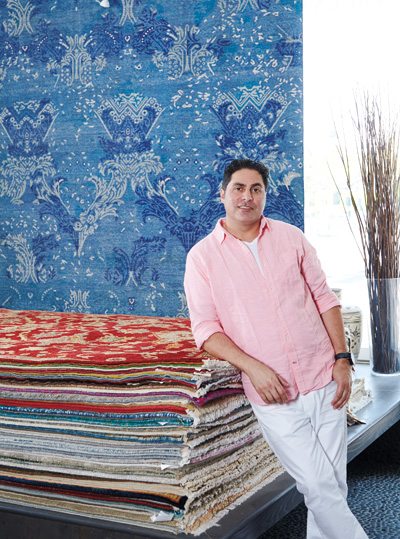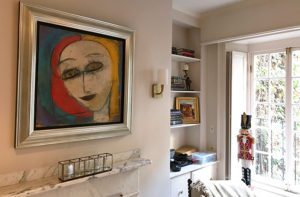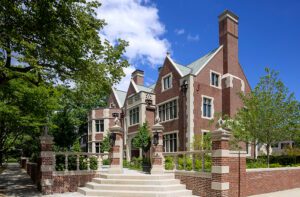Five Questions: Mike Alidadi
August 18, 2016
Mike Alidadi, owner of Apadana Fine Rugs, offers suggestions about what to look for when buying, maintaining, and repairing fine carpets and rugs.
Text by Robert Kiener
 1. What are the hallmarks of an heirloom quality rug, one that is worth maintaining over time?
1. What are the hallmarks of an heirloom quality rug, one that is worth maintaining over time?
Quality is important. This includes everything from the intensity of the weave to the clarity of the pattern and design to the quality of the wool. For example, the finer and softer the wool is, the higher quality the carpet. Fine antique rugs that are 100 or 150 years old will still have that beautiful patina they had when they were made. Rarity can make a carpet special, too. We have sold thousands of antique rugs, and when a special piece comes along we recognize it immediately.
2. Any recent examples?
Customers brought in a rug for cleaning that their parents had given them. It was beautiful and had verses of Persian poetry woven into it. The owners knew it was old, but were amazed when we told them it was made in the 1870s to 1880s, and was of museum quality. It was worth around $150,000, so it made sense to put money into it to clean and restore it. They initially wanted to store it away, but I told them it would be a shame not to display it. A rug like that is worth preserving for the future.
3. Is there a rule of thumb for how often a rug should be cleaned?
Rugs need to be cleaned once a year or, at minimum, every two years by professional rug cleaners. In the old days, we just washed the rugs. But with new technology, such as digital microscopes, we can inspect rug fibers and ensure their health. New, computerized cleaning processes let us look deep inside the fabric to find chemicals or toxins and remove them. For example, we can remove lanolin from old rugs and make them softer and less prone to drying and cracking. We can also fireproof and stain-proof rugs or coat them to shield them against harmful bacteria and fading. This helps prevent allergies, asthma, and other respiratory diseases.
4. Do rugs have a natural lifespan? When is a rug beyond repair?
As long as you protect your rugs, they can last hundreds of years. If they are protected properly they could last forever. People have brought us rugs that have been neglected—not washed for years, cracked, full of holes—so restoring them would cost more than the rug is worth. With, say, a nineteenth-century carpet that is in horrible shape, we usually recommend having it cut into runners or pillow or cushion covers. One of the beauties of rugs is that they can be repurposed and recycled.
5. What should we look for when buying an artisanal rug and what can we expect to pay?
In general, for a room-sized antique rug you should expect to pay $10,000 to $15,000 or more. For a new, high-quality rug anywhere from $5,000 to $10,000. You have to look for the condition: the knot count, quality of the wool, and the dye. I recommend not buying anything overseas. You don’t get the best quality rugs in the bazaars and shops abroad, because the best carpets are exported by the major companies in India, Pakistan, and Turkey to the U.S. and Europe. Not that many great rugs end up in markets abroad; most are lower quality, mass produced for the tourist market. Most people end up paying too much for mediocre products when they buy on vacation. •
Apadana Fine Rugs, Norwalk, (203) 299-1760, apadanafinerugs.com
Share
![NEH-Logo_Black[1] NEH-Logo_Black[1]](https://www.nehomemag.com/wp-content/uploads/2022/08/NEH-Logo_Black1-300x162.jpg)








You must be logged in to post a comment.